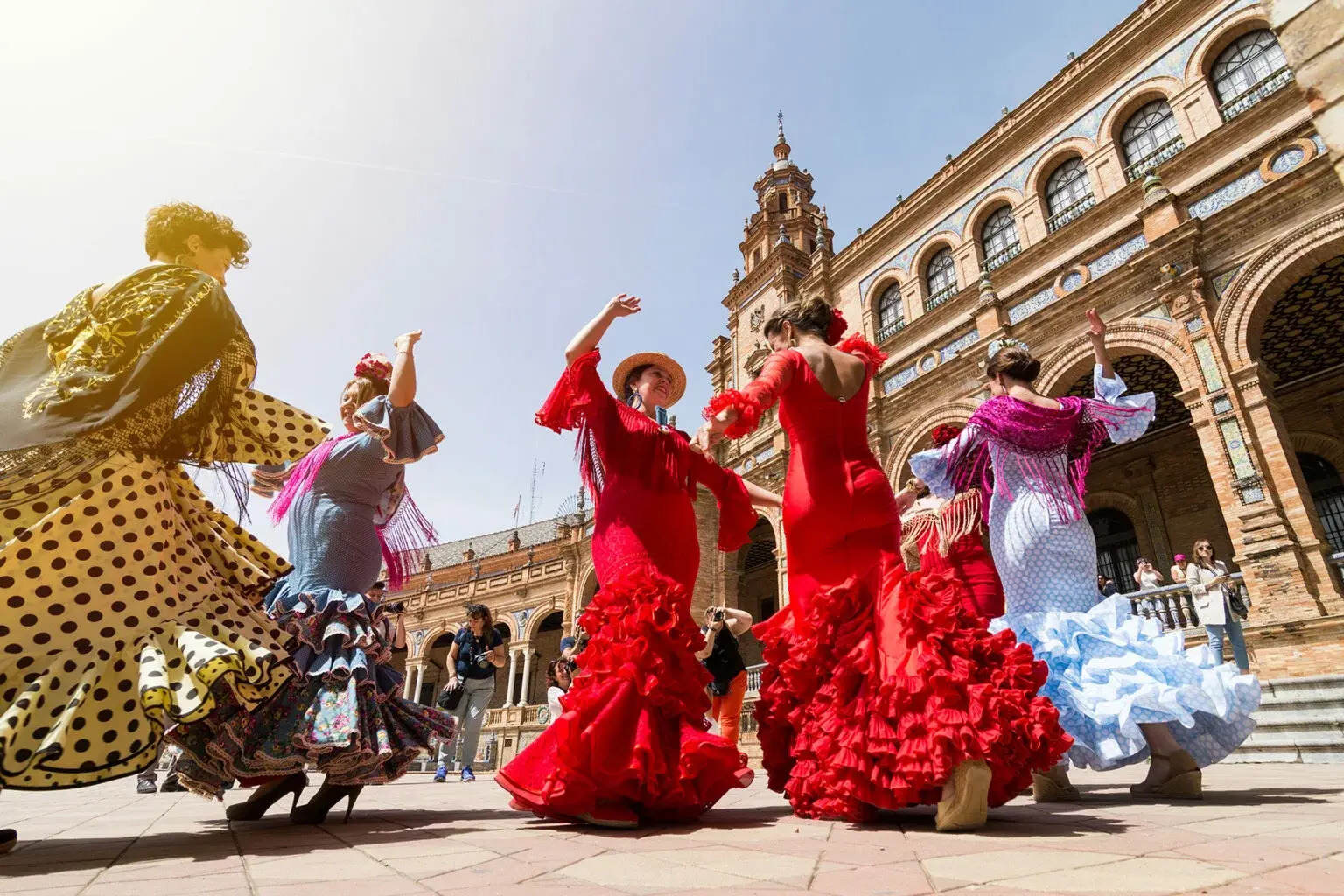
Spanish festivals are a vibrant tapestry of culture, tradition, and sheer joy. Ever wondered what makes these celebrations so special? From the fiery passion of Flamenco to the colorful chaos of La Tomatina, Spain's festivals are legendary. Why are Spanish festivals so unique? They blend history, religion, and community spirit in ways that captivate both locals and visitors. Imagine dancing in the streets during Carnival or witnessing the solemn beauty of Semana Santa. Each festival tells a story, connecting the past with the present. Ready to dive into the heart of Spanish culture? Let's explore 28 fascinating facts about these unforgettable celebrations!
Key Takeaways:
- Get ready for some messy fun at La Tomatina, where thousands gather for a massive tomato fight in Spain. Remember to squish those tomatoes before throwing them to avoid injuries!
- Experience the thrill of the Running of the Bulls and the fiery celebration of Las Fallas in Spain. From adrenaline-pumping events to vibrant spring fairs, Spanish festivals offer a unique blend of tradition and excitement.
La Tomatina: The World's Biggest Food Fight
La Tomatina is one of Spain's most famous festivals, held annually in Buñol. This event draws thousands of participants eager to engage in a massive tomato fight.
- La Tomatina began in 1945 when a group of young people started a spontaneous tomato fight during a parade.
- The festival takes place on the last Wednesday of August.
- Over 100 metric tons of overripe tomatoes are used during the event.
- Participants must squish tomatoes before throwing them to avoid injuries.
- The fight lasts exactly one hour, after which fire trucks hose down the streets.
Running of the Bulls: Adrenaline and Tradition
The Running of the Bulls in Pamplona is a thrilling and dangerous event that forms part of the San Fermín festival. It attracts daredevils from around the globe.
- The event dates back to the 14th century.
- It occurs every year from July 6th to 14th.
- Bulls run through the streets for 825 meters, ending at the bullring.
- Participants wear white clothes with red scarves.
- The event starts at 8 AM each day with a rocket signal.
Las Fallas: A Fiery Celebration
Las Fallas is a traditional celebration held in Valencia, known for its spectacular displays of art and fire. The festival honors Saint Joseph, the patron saint of carpenters.
- Las Fallas takes place from March 15th to 19th.
- Gigantic sculptures called "ninots" are created and displayed throughout the city.
- On the final night, all but one of the ninots are burned in a massive bonfire.
- The saved ninot is chosen by public vote and placed in the Fallas Museum.
- The festival includes fireworks, parades, and traditional music.
Semana Santa: A Solemn Procession
Semana Santa, or Holy Week, is a deeply religious festival celebrated across Spain. It features processions that depict the Passion of Christ.
- Semana Santa occurs during the week leading up to Easter.
- The most famous processions take place in Seville, Málaga, and Granada.
- Participants, known as "nazarenos," wear hooded robes and carry candles or crosses.
- Elaborate floats called "pasos" depict scenes from the Bible.
- The processions are accompanied by somber music and prayers.
Feria de Abril: A Joyful Spring Fair
The Feria de Abril in Seville is a vibrant spring fair filled with dancing, music, and traditional costumes. It follows the solemnity of Semana Santa.
- The fair begins two weeks after Easter.
- It lasts for six days, from Monday to Saturday.
- The event features "casetas," or private tents, where people gather to eat, drink, and dance.
- Flamenco dancing and music are central to the celebrations.
- The fairgrounds are illuminated by thousands of colorful lights.
La Mercè: Barcelona's Biggest Festival
La Mercè is Barcelona's largest annual festival, held in honor of the city's patron saint, Our Lady of Mercy. It showcases Catalan culture and traditions.
The Vibrant World of Spanish Festivals
Spanish festivals offer a unique glimpse into the country's rich culture and traditions. From the tomato-throwing chaos of La Tomatina to the fiery spectacle of Las Fallas, these celebrations are a testament to Spain's love for community, history, and fun. Each festival, whether it's the Running of the Bulls in Pamplona or the colorful Semana Santa processions, brings people together in a shared experience of joy, excitement, and sometimes, a bit of danger.
These events aren't just for locals; they attract visitors from all over the world, eager to partake in the festivities. Whether you're dancing in the streets during Carnival or marveling at the intricate flower carpets of Corpus Christi, Spanish festivals promise unforgettable memories. So, next time you're planning a trip, consider timing it with one of these incredible celebrations. You'll leave with stories to tell and a deeper appreciation for Spain's vibrant culture.
Frequently Asked Questions
Was this page helpful?
Our commitment to delivering trustworthy and engaging content is at the heart of what we do. Each fact on our site is contributed by real users like you, bringing a wealth of diverse insights and information. To ensure the highest standards of accuracy and reliability, our dedicated editors meticulously review each submission. This process guarantees that the facts we share are not only fascinating but also credible. Trust in our commitment to quality and authenticity as you explore and learn with us.
